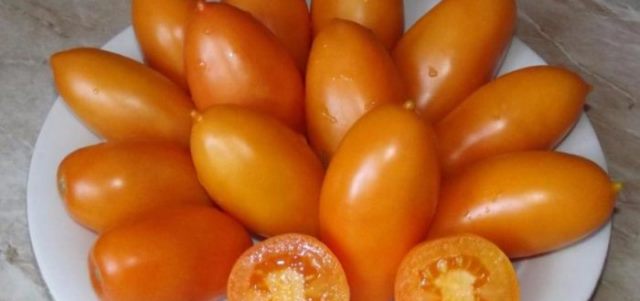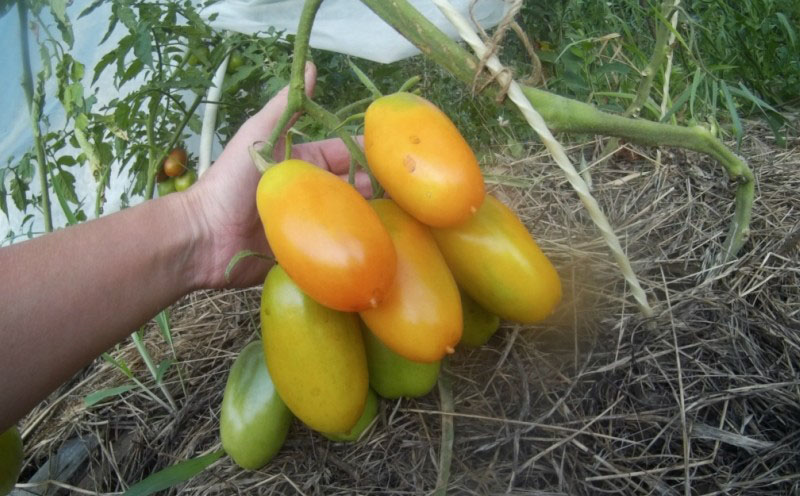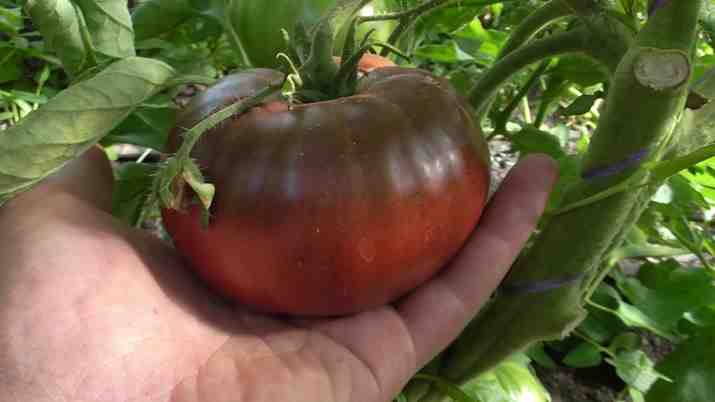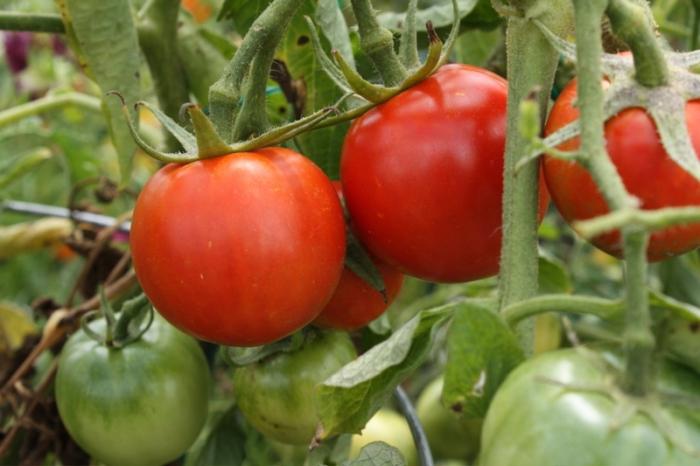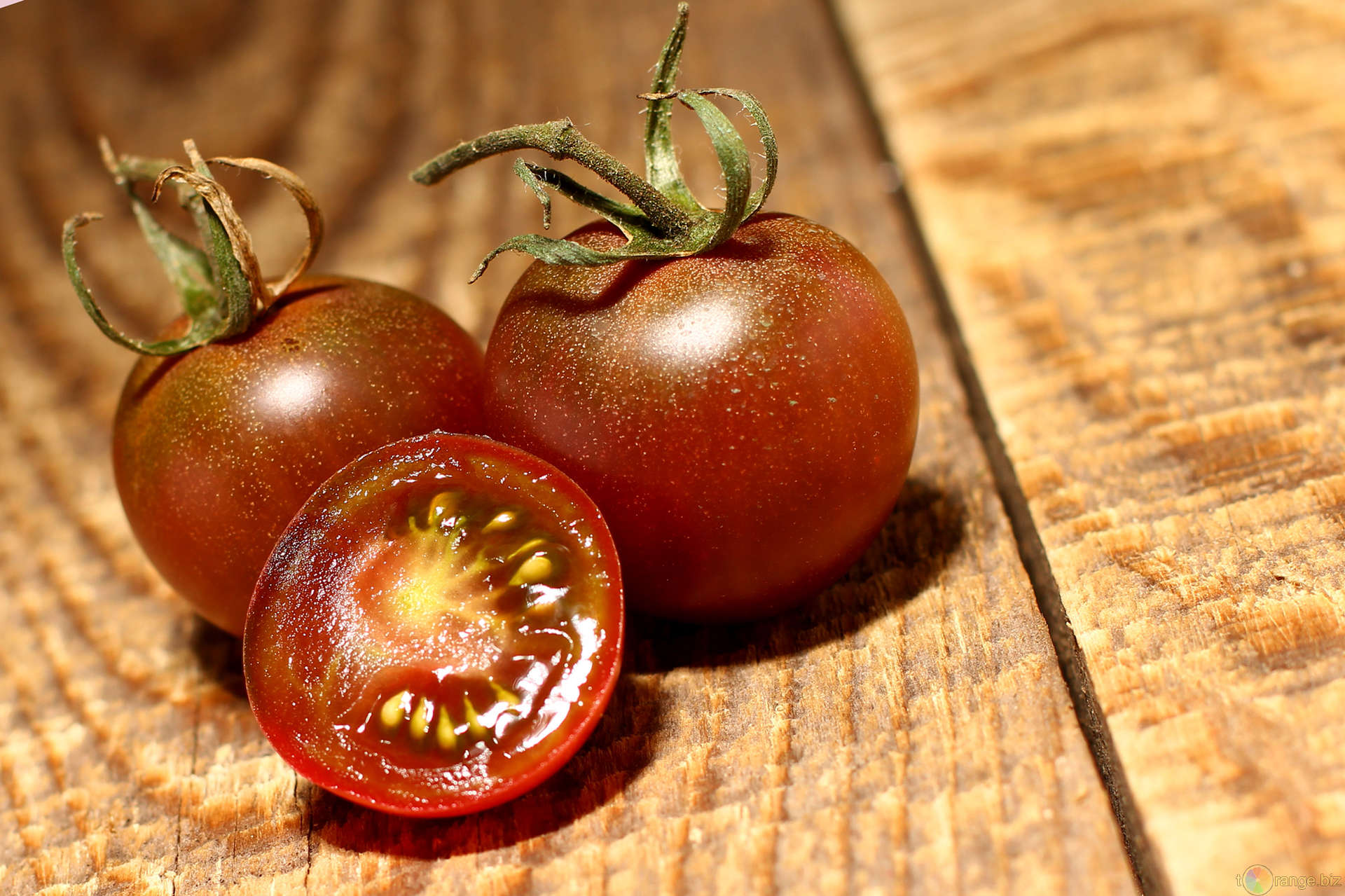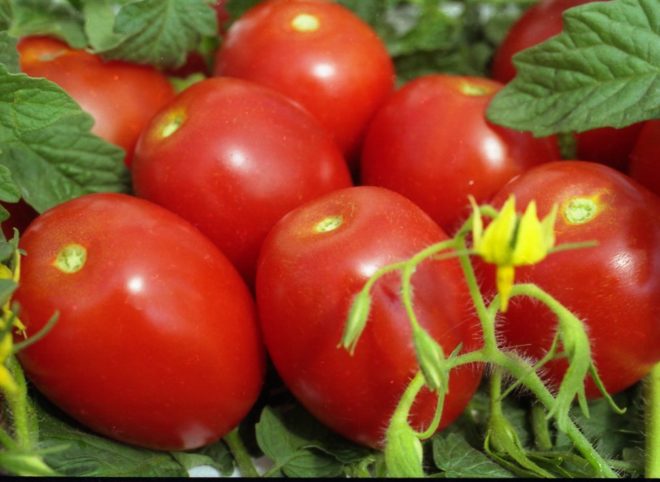Content:
Tomato Goldfish was selected in the 90s of the last century by the agronomists of the Gisok company. In 1999, the variety is included in the State Register as an independent type of tomato, allowed for cultivation in all Russian regions in open ground and greenhouses.
Plant features
Tomato Goldfish, characteristics and description of the variety:
- Mid-season, technical ripening occurs 112-125 days after germination, self-pollinated;
- The plant is indeterminate, massive, reaches a height of two meters, light green, strongly leafy. Leaves of medium size, openwork, slightly pubescent. The ovary is in the form of simple inflorescences, begins to form after the appearance of 8-9 leaves. Stems of medium thickness, dense;
- Fruits are small, smooth, oblong cylindrical in shape, with a peculiar sharp nose at the tip, up to 90-115 g, grow in brushes, on which there are up to 8 tomatoes, the color of a mature tomato is bright yellow, golden or orange. Unripe tomatoes are dark green in color with a dark spot at the stalk. The pulp is juicy, dense, moderately watery fleshy. The skin is thin. No more than 4 seed chambers, with few seeds. Gorgeous taste characteristics: sweet, delicate, aromatic, one might even say dessert. High beta-carotene content. Used fresh, for conservation and production of tomato juice;
- A dark spot at the stalk may remain in a ripe golden tomato, caused by a lack of light and heat;
- The tomato yield is good - up to 8.7-10 kg per sq. meters;
- Frost resistance - tomato is successfully grown both in the southern part of the country and in the central European part of Russia. Withstands cool weather in the daytime and at night, is not afraid of the shade.
Recommendations for agricultural technology
Due to the long ripening period, Goldfish tomatoes are advised to be sown at the end of February or in the first decade of March, but not later.
For seeds, you need to take material from trusted manufacturers or collected yourself. Otherwise, there is a risk of great disagreement and infection with diseases.
Germination of tomato seedlings is done in the traditional way. For planting, a mixture of humus, peat and earth is used. Before planting, tomato seeds and soil undergo all the necessary disinfection procedures (calcination, treatment with potassium permanganate). Moisten the soil and sow seeds, no closer than 2 cm from each other.
Caring for tomato seedlings should include:
- Maintaining comfortable air humidity;
- Sufficient lighting, while there should be no direct sunlight (young shoots can get burned). To prevent stretching of tomato seedlings, you should ensure an even supply of light to all bushes, or simply systematically rotate the container with seedlings;
- Regular watering, preferably from a fine mesh watering can. The main thing is not to overdo it;
- Temperature control - 22-24 ° C - is the best indicator for young bushes.
A pick is made after the appearance of 2-4 leaves, the seedlings are seated at a distance of 7-10 cm from each other.
Transplanting the Goldfish into the greenhouse is possible in April - early May, into the ground - depending on the climatic characteristics of a particular area, preferably after the threat of return frosts has disappeared.
Tomatoes prefer loose, fertile soil that retains moisture well. The acidity should not exceed 6.5 pH.
It is necessary to plant bushes at a distance of at least 40-50 cm from each other, ideally - 0.7 meters, in an amount of up to 5 pieces per sq. meter. Before planting, potash, phosphorus fertilizers and humus are introduced with digging. Make the holes at least 15 cm deep. Plants are immediately equipped with support.
Top dressing of tomato:
- The first feeding after planting is carried out after 14 days. Mullein or bird droppings are used. You can use purchased products: Vermistil, Humisol;
- The second is produced at the beginning of flowering. Potash, sodium, phosphorus fertilizers are applied under the bush;
- The third subcortex is necessary during the ripening period. Mullein is used with the addition of complex fertilizers;
- Subcortex with infusion of weeds. It is practiced several times per season (greens are soaked in a container of water and fermented for two weeks), watered at the root.
Top dressing of tomato is carried out only if necessary, excess is harmful to the plant.
Watering should be done in the evening or early in the morning, when there is no heat, and the moisture will not rapidly evaporate. To prevent the tomatoes from cracking, you should not pour them too much, but irrigate them as needed. Watering is possible once a week, if the soil is very dry, then more often. The water should be warm. Cold water damages the tomato root system.
Plant formation, pinching and garter are required. The stepsons must remove everything, forming a bush into one stem. Golden tomatoes are quite tall, the stems are thin and can break under the weight of weighty fruits, so you cannot do without tying to a support. The leaves must also be removed, as they will grow and interfere with the flow of light.
It is also necessary to systematically loosen the soil, hilling, removing dry leaves and weeding.
Diseases and prevention
Goldfish is a tomato with medium resistance to all diseases of Solanaceous crops. There is an increased risk of late blight, which develops as a result of agricultural errors.
To prevent late blight, you need:
- Control the watering process;
- Regularly inspect the plant for the presence of affected leaves and fruits, remove them if necessary;
- Use only high-quality seeds for planting;
- Observe the rules of crop rotation.
Tomato Goldfish is susceptible to Colorado potato beetle, aphids and apical rot. To get rid of them, it is advisable to use special drugs.
Advantages and disadvantages
There are no ideal varieties, each tomato has its own advantages and disadvantages. Goldfish has quite a lot of positive sides, but there are practically no downsides.
Pros of tomato:
- Good productivity;
- Excellent taste characteristics;
- Whole fruit preservation is possible;
- Yellow color indicates the absence of allergens and a high content of carotene;
- Withstands long-term transportation;
- Does not crack;
- Resistant to adverse climatic conditions, not afraid of frost;
- Drought-resistant;
- Abundant and prolonged fruiting, up to October;
- Long keeping quality while maintaining the appearance and composition of nutrients;
- The ability to ripen on a removed brush;
- High content of tetra-cis-lycopene - an enzyme responsible for the youthfulness of the skin and the body as a whole.
Cons of tomato:
- Requires pinching, garters to the support;
- Long growth without ovaries;
- Does not have persistent immunity to diseases.
Goldfish is rich in fiber, vitamins A, C and lycopene, and does not contain cholesterol.But, in comparison with red varieties, this indicator is significantly lower.
"Zolotaya Rybka" combines exquisite appearance and unusually sweet taste, and, in all fairness, is considered one of the best among yellow tomatoes. The minimum number of disadvantages, and then they can be attributed simply to the physiological characteristics. The occurrence of diseases can be prevented by appropriate care, in which the tomato is not capricious, the main conditions are good soil and timely watering.
